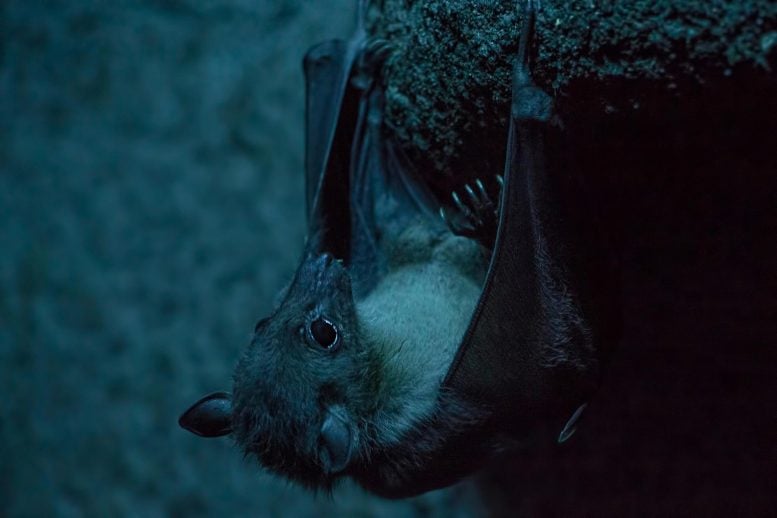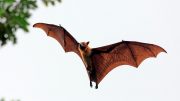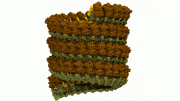
A Marburg virus outbreak in Equatorial Guinea has caused 11 suspected deaths. With no approved treatments or vaccines, outbreak control relies on contact tracing and limiting high-risk activities. Egyptian fruit bats are a suspected reservoir, and increasing outbreak frequency is linked to human encroachment and climate change.
The World Health Organization confirmed a Marburg virus outbreak in Equatorial Guinea, with 11 deaths suspected to be caused by the virus. Marburg and Ebola viruses, both belonging to the filovirus family, cause severe disease and death in humans. Currently, there are no approved treatments or vaccines for Marburg virus, making outbreak control reliant on contact tracing, patient monitoring, quarantines, and limiting high-risk activities. The Egyptian fruit bat is suspected to be a natural reservoir for the virus, and the increasing frequency of Marburg outbreaks is linked to human encroachment on animal habitats and climate change-induced alterations to wildlife habitats.
The World Health Organization confirmed an outbreak of the deadly Marburg virus disease in the central African country of Equatorial Guinea on February 13, 2023. To date, there have been 11 deaths suspected to be caused by the virus, with one case confirmed. Authorities are currently monitoring 48 contacts, four of whom have developed symptoms and three of whom are hospitalized as of publication. The WHO and the U.S. Centers for Disease Control and Prevention are assisting Equatorial Guinea in its efforts to stop the spread of the outbreak.
Marburg virus and the closely related Ebola virus belong to the filovirus family and are structurally similar. Both viruses cause severe disease and death in people, with fatality rates ranging from 22% to 90% depending on the outbreak. Patients infected by these viruses exhibit a wide range of similar symptoms, including fever, body aches, severe gastrointestinal symptoms like diarrhea and vomiting, lethargy and sometimes bleeding.
We are virologists who study Marburg, Ebola, and related viruses. Our laboratory has a long-standing interest in researching the underlying mechanisms of how these viruses cause disease in people. Learning more about how Marburg virus is transmitted from animals to humans and how it spreads between people is essential to preventing and limiting future outbreaks.

Colorized transmission electron micrograph of Marburg virus particles (blue) harvested from infected VERO E6 cell supernatant. Image captured and color-enhanced at the NIAID Integrated Research Facility in Fort Detrick, Maryland. Credit: NIAID
Marburg virus disease
Marburg virus spreads between people by close contact only after they show symptoms. It is transmitted through infected body fluids such as blood, and is not airborne. Contact tracing is a potent tool to combat outbreaks. The incubation time, or time between infection and the onset of symptoms, ranges from two to 21 days and typically falls between five and 10 days. This means that contacts must be observed for extended periods for potential symptoms.
Marburg virus cannot be detected before patients are symptomatic. One major cause of the spread of Marbug virus disease is postmortem transmission due to traditional burial procedures, where family and friends typically have direct skin-to-skin contact with people who have died from the disease.
There are currently no approved treatments or vaccines against Marburg virus disease. The most advanced vaccine candidates in development use strategies that have been shown to be effective at protecting against Ebola virus disease.
Without effective treatments or vaccines, Marburg virus outbreak control primarily relies on contact tracing, sample testing, patient contact monitoring, quarantines and attempts to limit or modify high-risk activities such as traditional funeral practices.

The Egyptian fruit bat (Rousettus aegyptiacus) is suspected to be a natural reservoir for the Marburg virus. The increasing frequency of Marburg outbreaks is linked to human encroachment on animal habitats and climate change-induced alterations to wildlife habitats.
What causes Marburg virus outbreaks?
Marburg virus outbreaks have an unusual history.
The first recorded outbreak of Marburg virus disease occurred in Europe. In 1967, laboratory workers in Marburg and Frankfurt in Germany, as well as in Belgrade, Yugoslavia (now Serbia) were infected with a previously unknown pathogen after handling infected monkeys that had been imported from Uganda. This outbreak led to the discovery of the Marburg virus.
Identifying the virus took only three months, which, at the time, was incredibly fast considering the available research tools. Despite receiving intensive care, seven of the 32 patients died. This case fatality rate of 22% was relatively low compared to subsequent Marburg virus outbreaks in Africa, which have had a cumulative case fatality rate of 86%. It remains unclear if these differences in lethality are due to variability in patient care options or other factors such as distinct viral strains.
Subsequent Marburg virus disease outbreaks occurred in Uganda and Kenya, as well as the Democratic Republic of the Congo and Angola in Central Africa. In addition to the current outbreak in Equatorial Guinea, recent Marburg virus cases in the West African countries of Guinea in 2021 and Ghana in 2022 highlight that the Marburg virus is not confined to Central Africa.
Strong evidence shows that the Egyptian fruit bat, a natural animal reservoir of Marburg virus, might play an important role in spreading the virus to people. The location of all Marburg virus outbreaks coincides with the natural range of these bats. The large area of Marburg virus outbreaks is unsurprising, given the ecology of the virus. However, the mechanisms of zoonotic, or animal-to-human, spread of Marburg virus still remain poorly understood.
The origin of a number of Marburg virus disease outbreaks is closely linked to human activity in caves where Egyptian fruit bats roost. More than half of the cases in a 1998 outbreak in the northeastern Democratic Republic of the Congo were among gold miners who had worked in Goroumbwa Mine. Intriguingly, the end of the nearly two-year outbreak coincided with the flooding of the cave and the disappearance of the bats in the same month.
Similarly, in 2007, four men who worked in a gold and lead mine in Uganda where thousands of bats were known to roost became infected with Marburg virus. In 2008, two tourists were infected with the virus after visiting Python Cave in the Maramagambo Forest in Uganda. Both developed severe symptoms after returning to their home countries – the woman from the Netherlands died and the woman from the United States survived.
The geographic range of Egyptian fruit bats extends to large portions of sub-Saharan Africa and the Nile River Delta, as well as portions of the Middle East. There is potential for zoonotic spillover events, to occur in any of these regions.
More frequent outbreaks
Although Marburg virus disease outbreaks have historically been sporadic, their frequency has been increasing in recent years.
The increasing emergence and reemergence of zoonotic viruses, including filoviruses (such as Ebola, Sudan, and Marburg viruses), coronaviruses (which cause SARS, MERS and COVID-19), henipaviruses (such as Nipah and Hendra viruses) and Mpox appear to be influenced by both human encroachment on previously undisturbed animal habitats and alterations to wildlife habitat ranges due to climate change.
Most Marburg virus outbreaks have occurred in remote areas, which has helped to contain the spread of the disease. However, the large geographic distribution of Egyptian fruit bats that harbor the virus raises concerns that future Marburg virus disease outbreaks could happen in new locations and spread to more densely populated areas, as seen by the devastating Ebola virus outbreak in 2014 in West Africa, where over 11,300 people died.
Written by:
- Adam Hume, Research Assistant Professor of Microbiology, Boston University
- Elke Mühlberger, Professor of Microbiology, Boston University
- Judith Olejnik, Senior Research Scientist, Boston University
This article was first published in The Conversation.![]()








Be the first to comment on "The Looming Marburg Crisis: How Virus Outbreaks Escalate and Spread"